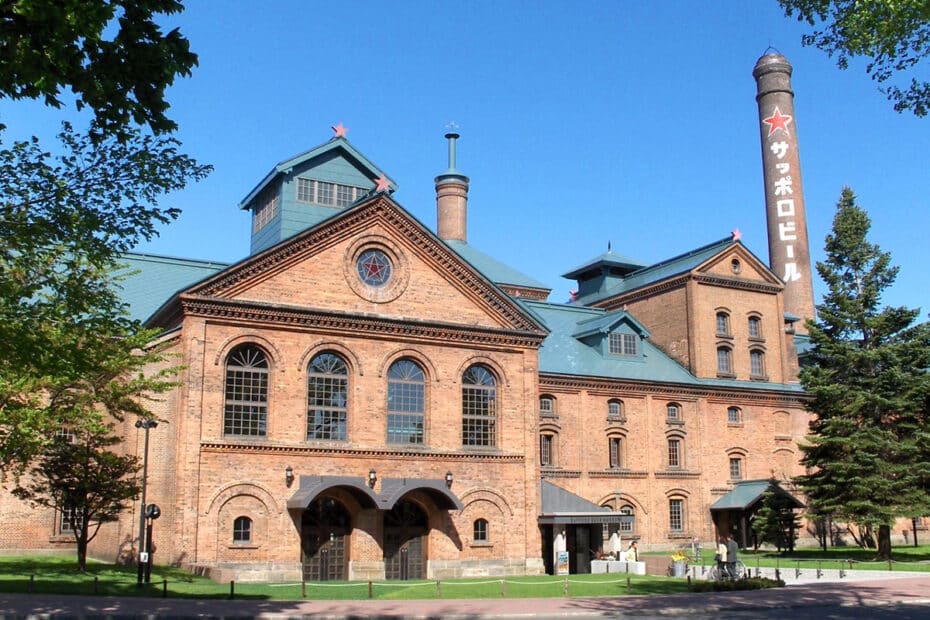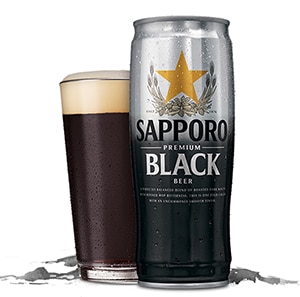Sapporo has been crafting some of Japan’s best beer since the early days when the beverage was a novelty in the country. Today, it’s one of the world’s largest alcohol producers, with a brand recognized globally.
This article is a journey through the company’s rich history, examining its current brands, ingredients, and sustainable practices. So, without further ado, let’s delve into the fascinating world of Sapporo Beer.
This post contains both sponsored links to trusted advertisers and Japanese Bar products. I earn commissions on purchases made through sponsored links.
History of Sapporo Beer
The history of Sapporo is directly tied to the history of Japanese beer itself. The Meiji Restoration and Japan’s modernization sparked efforts to brew Western beer in Japan for the Japanese market. And Sapporo is a direct result of government efforts to foster this new market.
Get the coolest Sapporo and Hokkaido shirts around! Stay frosty my friends.

Early History of Sapporo
The founding of Sapporo Brewery in 1876 marked the beginning of a journey unlike any other. Hokkaido’s unique climate and natural resources provided the perfect ingredients for a world-class beer.
Sapporo Beer wasn’t the brainchild of a single entrepreneur, rather, it was the product of a modernizing Japan’s attempt to develop and capitalize off of the natural bounty of Hokkaido. And newly introduced beer was seen as the “beverage of the new era.”
Emperor Meiji personally endorsed the brewery project in 1875, and shortly after, German-trained brewer Nakagawa Seibei was leading the efforts to launch a brewery in Hokkaido.
The plan was to eventually move the brewery to Tokyo. But the Sapporo, Hokkaido location’s advantages over developed Tokyo led to the decision to stay put.
In 1889, Sapporo brought in a German brewmaster named Max Pormann*. Through the incorporation of more sophisticated German brewing techniques and equipment, Sapporo Brewery was able to elevate its craft to the next level. The company’s expansion and growth beyond Hokkaido saw it acquire competitors and expand throughout Japan in the early 20th century.
Innovations in brewing technology, such as the use of refrigeration and yeast strains, further solidified Sapporo Brewery’s place as a leader in the industry. Even the challenges faced during World War II and post-war reconstruction could not hinder its continued growth.
*Pormann also was instrumental in setting up the Osaka Beer Company, which later became Asahi.

Global Expansion and the Modern Era
After World War II, successful new products and initiatives were especially successful for Sapporo Beer. In the year 1964, Sapporo took the bold step of exporting to the United States, paving the way for a new chapter in their history.
The company expanded its facilities to new locations across Japan. And eventually, they began to gobble up major breweries abroad.
The year 2006 saw the acquisition of Canadian brewer, Sleeman Breweries, a move that further solidified Sapporo’s position in the international market. More recently in 2017, Sapporo acquired the iconic Anchor Brewing of California.
Most recently, Sapporo acquired Stone Brewing for $165 million. Stone ranked ninth on the Brewers Association’s 2021 list of craft breweries, has bi-coastal capacity and a broad distribution network, making it a valuable asset for Sapporo as it expands its presence in North America.
Today, Sapporo continues to introduce new products and expand into new markets, always keeping in mind its rich heritage and the commitment to quality that has made them a beloved brand worldwide. Sapporo’s innovative spirit has allowed them to stay ahead of the game, and their dedication to excellence ensures that they remain a star in the world of brewing.
Get the meanest Japanese cat shirt on the block, but watch out! Lucipurr is a bad kitty.
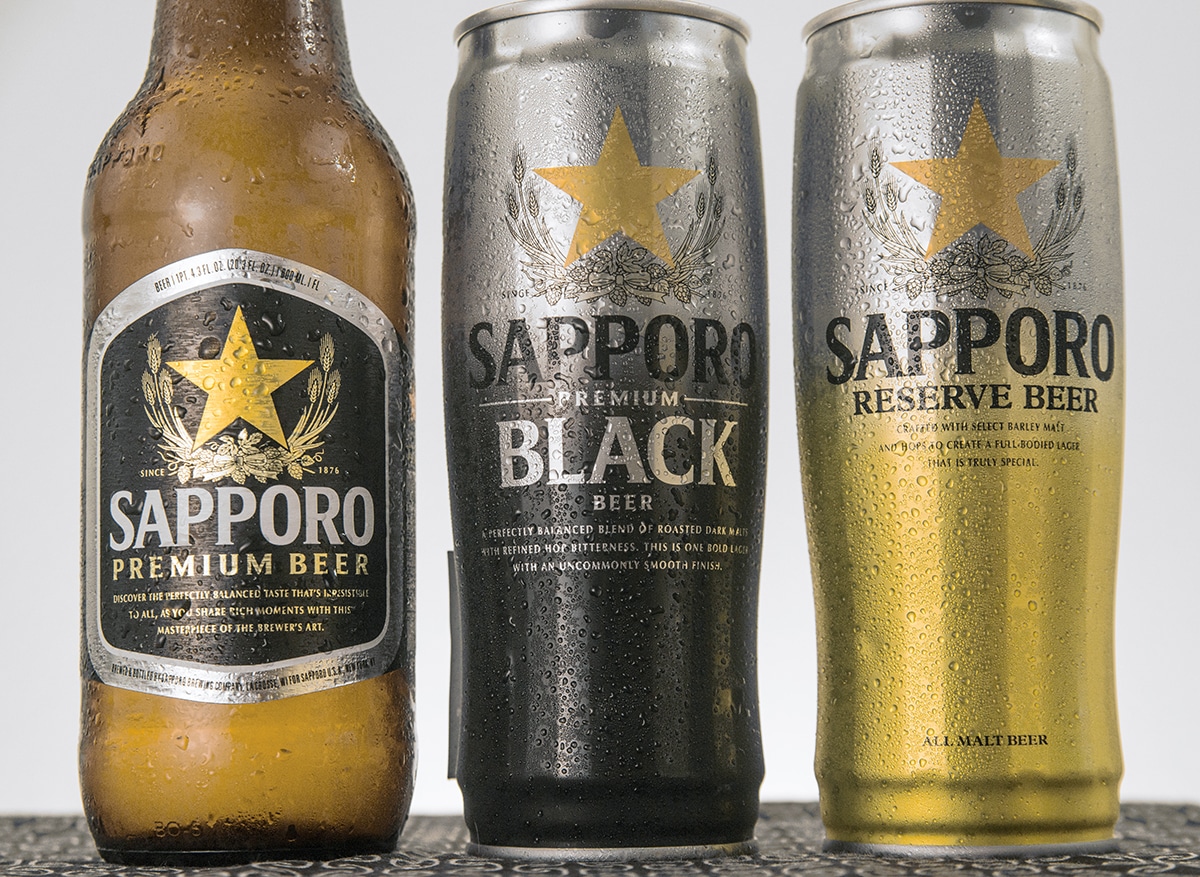
Current Sapporo Beer Brands
Sapporo makes a variety of beers with Sapporo Premium being the company’s flagship. All of the brews in the company’s lineup have a soft, lightly-hopped “international” style. That is to say, they’re consistent, clean, and made at scale.
If you’re looking for Sapporo beer with more character, then give Yebisu brand beers a try. However, Yebisu doesn’t make it into the US, unfortunately.
Sapporo Premium Lager
Sapporo Premium Beer is the company’s flagship product. It’s a refreshing lager (international pale lager more specifically) with a crisp, refined flavor and clean finish. It’s a popular beverage among sushi bars and izakaya across the globe.
Sapporo is commonly referred to as a rice lager, but it also contains corn and starch*. This is one of the reasons Sapporo is so light, soft, and popular with sushi.
Sapporo Premium clocks in at 4.9% ABV with low how bitterness. A 12-ounce serving has 140 calories and 10.3 grams of carbohydrates which is much less than your typical craft beer.
Awards for this Japanese lager include a 2004 gold medal at the International Beer Competition in Australia and a 2019 silver medal at the International Beer Challenge held in London.
*Full Ingredients: Malted barley, rice, corn, starch, hops, water
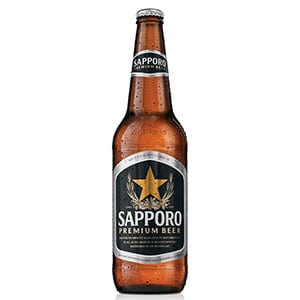
Dive Deeper into Sapporo Premium*
*Swimming in beer could be hazardous to your health and should not be attempted.
Sapporo Premium Black Beer
Sapporo Premium Black is a nod to Germany’s historic influence on Japanese beer. German brewers and brewing techniques were the standards of the early Japanese industry, including at Sapporo. And as a result, inky black schwarzbier-style lagers were made by the major breweries.
Sapporo Black evolved from those early Japanese dark lagers. It’s semi-rich and malty, yet smooth and crisp in the classic Sapporo fashion. It’s a little roasty with mellow hop bitterness and is complemented by a sweet, round fullness and distinct coffee and chocolate flavors.
You might expect this black-colored lager to be strong, but the numbers are relatively restrained. 5.0% ABV, plus 152 calories and 12.8 grams of carbohydrates per 12oz serving, is quite reasonable.
Notably in 2014, Sapporo Premium Black Beer won the gold medal at the International Beer Cup held in Japan.
Sapporo Reserve Beer
Sapporo Reserve is an all-malt lager and a direct response to the success of Kirin Ichiban. It’s refreshing, slightly malty, and moderately bitter–more so than Kirin.
Once again, this beer has a relatively average alcohol content of 5.0%. Every 12 oz serving provides 151 calories and 11.4 grams of carbs. It’s a great thirst quencher with a bit more character than Sapporo Premium.
Sapporo Premium Light Beer
Sapporo Premium Light is indeed a lighter version of the flagship Sapporo Premium. This session beer is highly drinkable but still tastes like beer.
With a restrained 3.9% ABV, plus 110 calories and 8.5 grams of carbs per 12oz serving, Sapporo Light is a solid choice for less impactful drinking.

Go Towards the Sapporo Light*
*Unless you suspect you’ve suffered a traumatic injury, in which case you should avoid the light.
Sapporo PURE
The newest beer in the Sapporo lineup is PURE, a sporty light beer that’s easy-drinking and figure-friendly. This pale golden lager is expertly brewed to offer a delicate, floral aroma and a crisp, clean finish.
With only 90 calories, 2.4 grams of carbs, and a 4.0% ABV, Sapporo PURE is less filling than Sapporo Premium Light. But it still retains a respectable amount of flavor.
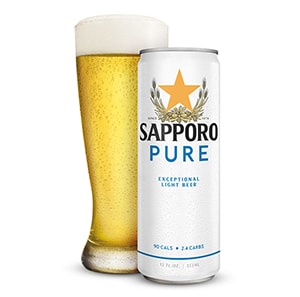
Sapporo PURE as the Driven Snow*
*Its only flaw is that if you drink too much it might literally kill you. So please drink in moderation.
Ingredients and Brewing Process
Sapporo beer has always relied on quality ingredients. The original brewery water is sourced from the underground aquifers of Hokkaido and known for its purity and softness. But today Sapporo now has locations all over the world, each with its own water source.
The malt for Sapporo beer is primarily sourced from Germany, with some domestic suppliers as well. Hops come from various regions around the world, with a focus on high-quality aroma hops. And Sapporo’s proprietary yeast strain ensures that each batch of beer has a distinctive “Sapporo flavor.”
Sapporo Brewery follows traditional German brewing techniques, with a focus on precision and quality control at every step of the process. And once the beer is brewed, it’s packaged in various formats and distributed throughout Japan and beyond. With its commitment to quality and tradition, it’s no wonder that Sapporo beer is so well-loved around the world.
Notable Company Achievements
Sapporo Beer has an impressive track record of achievements.
The first came in 1886 when the brewery won the gold medal at the National Industrial Exposition held in Tokyo. The Japanese beer industry was still learning and developing at this time. But it was a precursor to the next big achievement that solidified Japan’s place in the global beer industry.
In 1900, Sapporo Beer won the gold medal in the Lager Beer category at the Exposition Universelle held in Paris, France. This was a significant achievement for the brewery and helped to establish its reputation as a world-class beer producer.
The International Exposition was a global exhibition that showcased various industrial, cultural, and scientific achievements of different countries. The 1900 Paris Exposition was one of the largest held in the 19th century, attracting more than 50 million visitors over its six-month run.
Sapporo also became the first company in Japan to introduce canned beer in 1969, revolutionizing the beer industry.
Today, Sapporo Beer has become a global brand with its products being sold in over 60 countries worldwide, spreading the legacy of Sapporo’s commitment to quality and excellence far and wide.
Sustainability Initiatives
Sapporo reports that it is dedicated to preserving our planet for future generations. To that end, the company has implemented several sustainability initiatives to reduce carbon emissions and minimize its environmental impact. These include the use of renewable energy sources, such as solar power and biomass boilers, as well as the promotion of sustainable agriculture and biodiversity through collaboration with local farmers.
In addition, Sapporo Beer takes an active role in reducing waste by incorporating recycled materials in its packaging and other areas of operations. By prioritizing these sustainability initiatives, Sapporo is committed to not only producing high-quality beer but also promoting a healthier planet for all.
Conclusion
As we come to the end of our journey through Sapporo Beer’s history and products, it’s clear that this is a company with a deep commitment to quality and sustainability.
From its founding in 1876 to its current global presence, Sapporo has remained true to its brewing process and ingredients, while also expanding its product line and embracing renewable energy sources.
As a result, Sapporo Beer is not only a well-known and respected brand in the world of beer but also a leader in sustainability initiatives. Sapporo Brewery is setting an example for other large companies to follow, and I look forward to seeing what this pioneering spirit will bring in the future.
